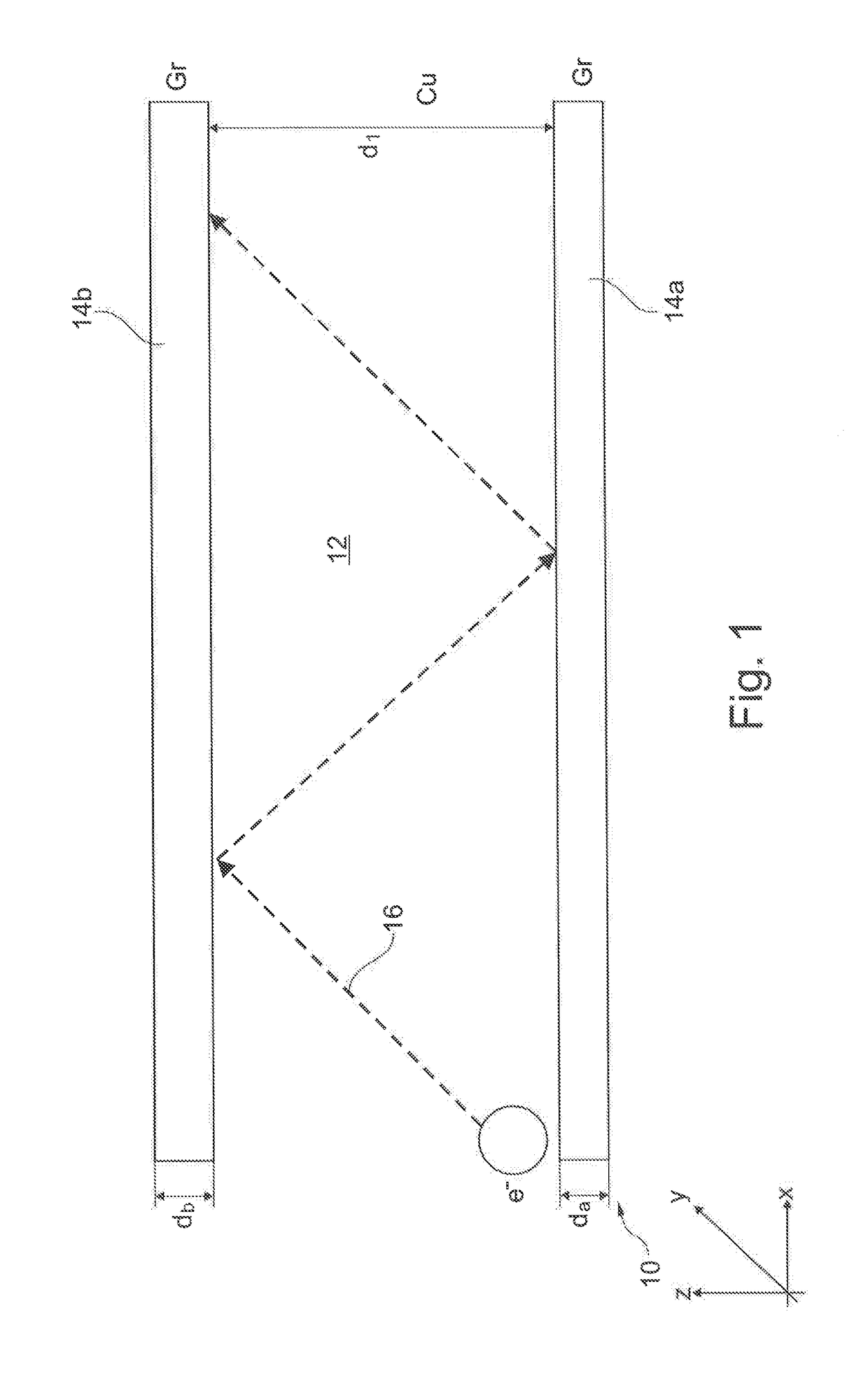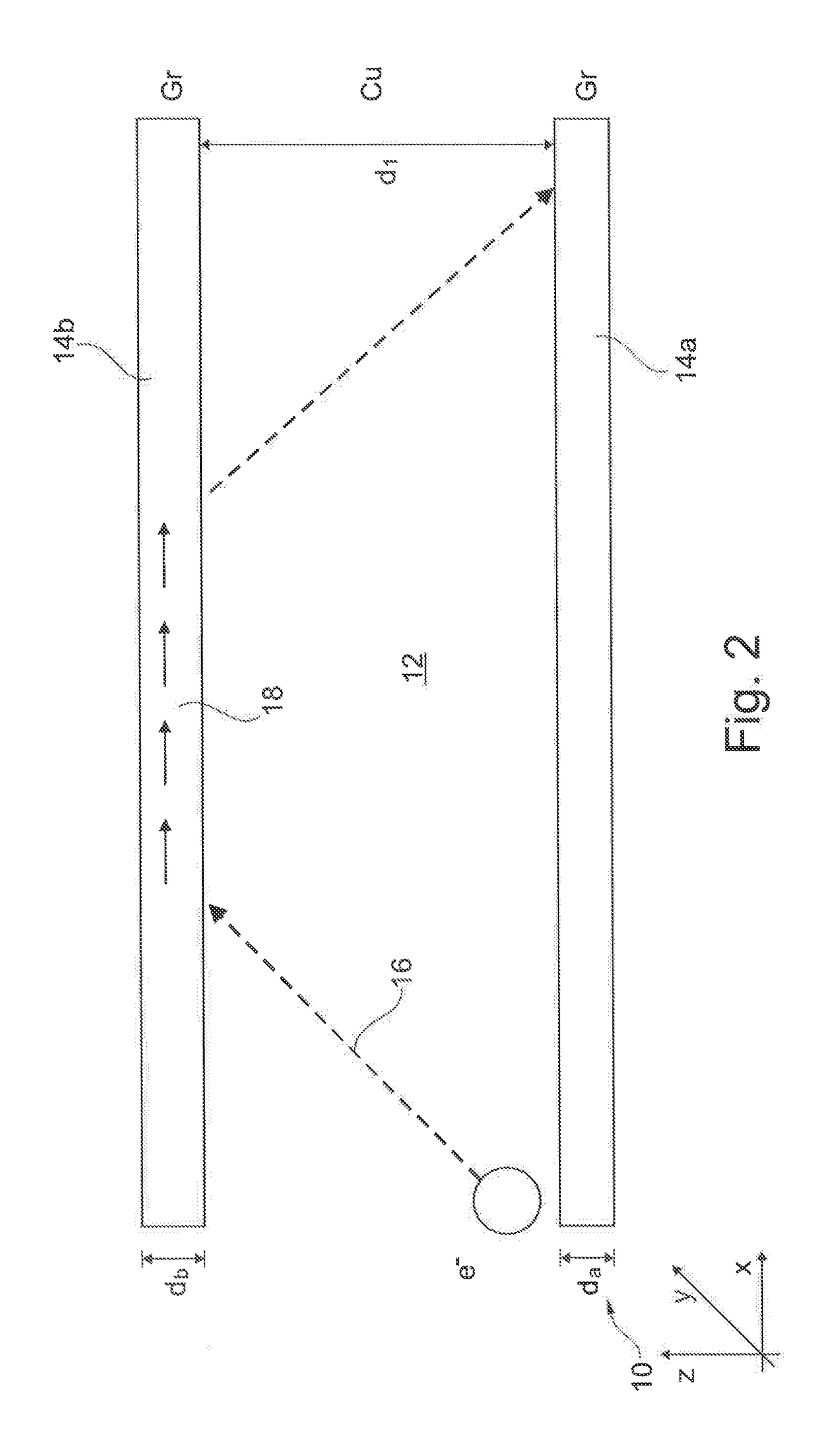Graphene-Copper Structure and Manufacturing Method
- Summary
- Abstract
- Description
- Claims
- Application Information
AI Technical Summary
Benefits of technology
Problems solved by technology
Method used
Image
Examples
Embodiment Construction
[0122]FIG. 1 is a schematic illustration of the composite structure 10 according to an example in a cross-sectional view. The composite structure 10 comprises a copper layer 12 sandwiched by a first (lower) graphene layer 14a and a second (upper) graphene layer 14b.
[0123]The copper layer 12 may be formed of pure copper (Cu), in particular in a (111) crystallographic orientation. However, in other examples, the copper layer comprises additional material other than copper, such as doped atoms or nanoparticles, as will be described in more detail below.
[0124]The copper layer 12 as shown in FIG. 1 extends at a width or thickness d1 between the first graphene layer 14a and the second graphene layer 14b, wherein d1 is generally no larger than 25 μm. For instance, the copper layer 12 may be formed at a thickness of 20 μm or 10 μm. In other examples, the copper layer 12 may be formed at a thickness of no larger than 2 μm or no larger than 1 μm.
[0125]The first graphene layer 14a and second ...
PUM
| Property | Measurement | Unit |
|---|---|---|
| Grain size | aaaaa | aaaaa |
| Grain size | aaaaa | aaaaa |
| Thickness | aaaaa | aaaaa |
Abstract
Description
Claims
Application Information
 Login to View More
Login to View More - R&D
- Intellectual Property
- Life Sciences
- Materials
- Tech Scout
- Unparalleled Data Quality
- Higher Quality Content
- 60% Fewer Hallucinations
Browse by: Latest US Patents, China's latest patents, Technical Efficacy Thesaurus, Application Domain, Technology Topic, Popular Technical Reports.
© 2025 PatSnap. All rights reserved.Legal|Privacy policy|Modern Slavery Act Transparency Statement|Sitemap|About US| Contact US: help@patsnap.com



